Drying flowers is part gardening, part crafting, and part art. While fresh flowers are fleeting, dried flowers can be used to create decorations and arrangements that can literally last months – even years!
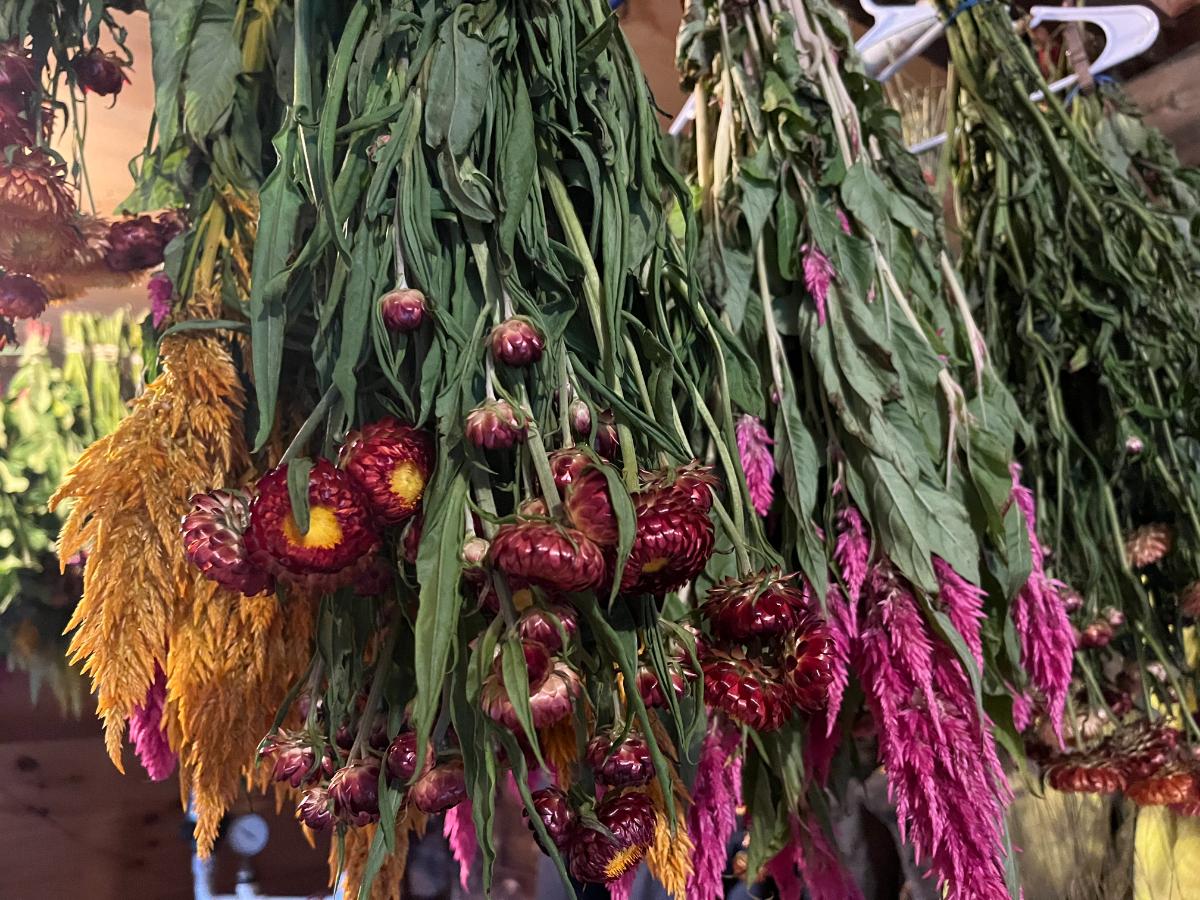
Dried flower arrangements make beautiful home decor, lasting wedding and shower decorations, and so much more.
But first, you have to dry them. That’s easier to do than you probably think it is!
We’ve got the goods on how to dry flowers simply and easily so you can then use them to create all sorts of seasonal, event, and home decor.
Jump to:
- Air Drying: The Traditional, Simple Way to Dry Flowers
- What Flowers Are Good for Drying?
- Experiment and play with other types of flowers
- Don’t forget about fillers and accents
- Harvesting Flowers for Drying
- How to hold your flowers until you can prep them for drying
- Prepping Flowers for Drying
- Where to Hang Flowers for Drying
- Make Sure You Hang Flowers Upside Down
- How Long Does It Take for Flowers to Dry?
- Where to Use Dried Flowers
Air Drying: The Traditional, Simple Way to Dry Flowers

There are several techniques for drying flowers. Some involve drying in an oven. Some use Desiccants that pull moisture from the flowers (things like silica gel or cat litter).
There is even a method that uses your microwave to dry your flowers.
By far, though, the simplest and easiest way to dry flowers is to air dry them. That is a simple process of prepping the flowers and hanging them until they are dry.
Hanging and air drying are by far the best (and perhaps the only reasonable) way to dry a large quantity of flowers.
There are a few tricks to doing this right.
What Flowers Are Good for Drying?
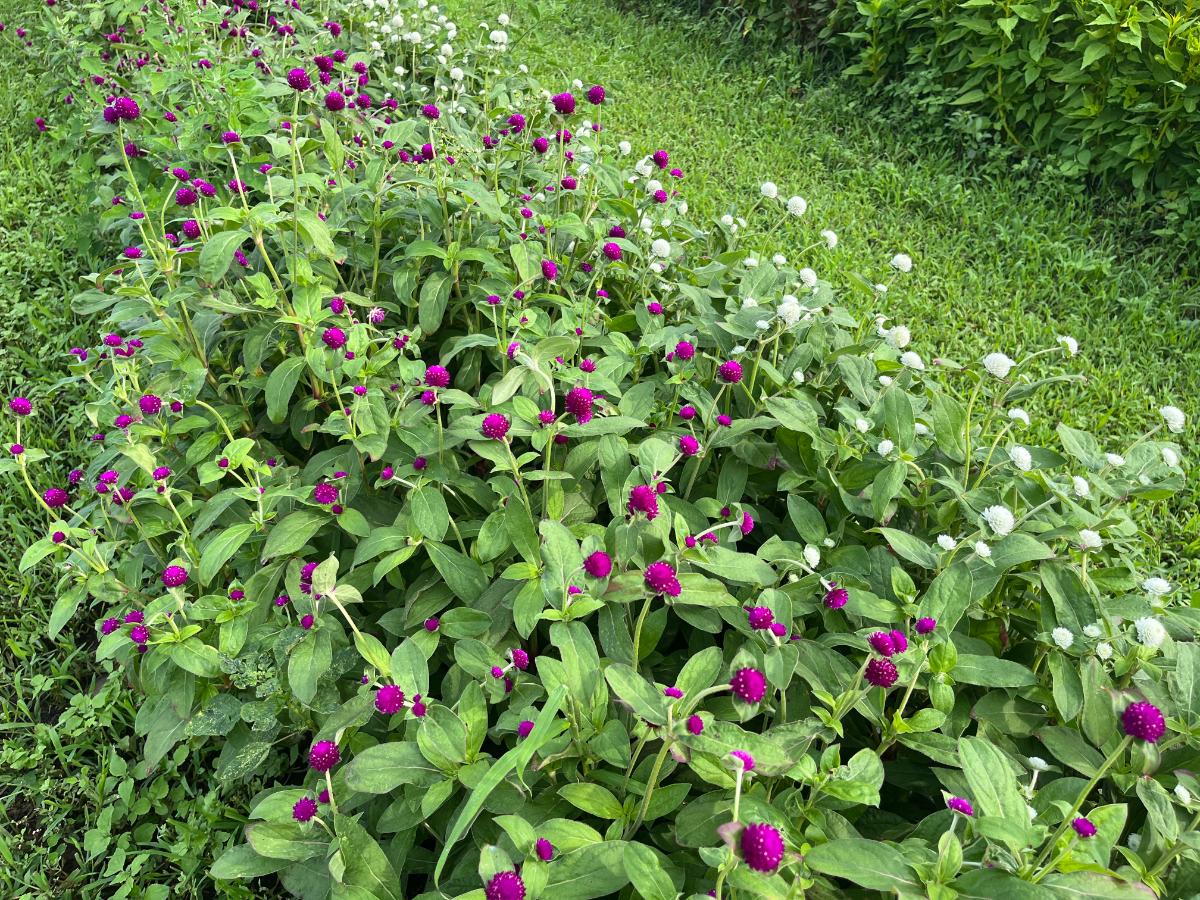
Any type of flower can be dried, but not all of them will hold their form well. Some will leave only a dried seed center, which can be an attractive element on its own. Others will look nearly the same dried as they do standing fresh in the field.
Flowers that hold their color and shape the best are those that are drier as live flowers.
The best flowers for drying have low moisture and stiffer, sturdier petals.
Delicate, thin flowers will tend to drop their petals and fall apart.
Some of the best flowers for drying are:
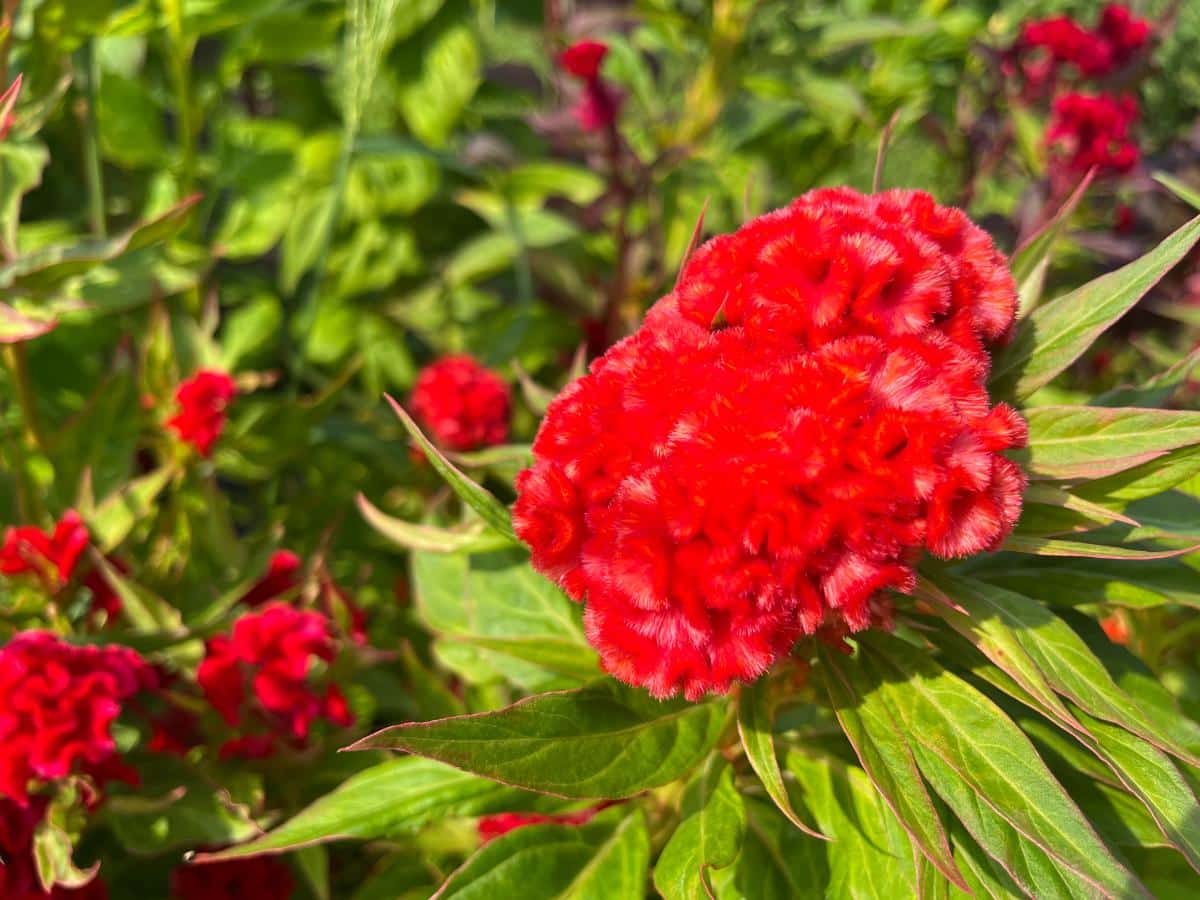
- Strawflowers
- Celosia (of which there are many colors and varieties)
- Cockscomb (a type of celosia)
- Gomphrena (globe amaranth)
- Amaranth
- Lavender
- Baby’s breath
- Statice
- Hydrangeas
- Roses
- Chrysanthemums
Experiment and play with other types of flowers

These are the best flowers for drying and they will dry down quickly while keeping great color. They will hold that color for many, many months, and even years.
Other flowers can still dry well and bring interest to dried flower arrangements. You should feel free to play around and try out drying other kinds of flowers to work with. Just be aware that some of them will need a little more care in handling.
Some may not last quite as long as the sturdier flowers like strawflowers, but they can be stunning while they do last.
Some other more delicate but worthy flowers to consider drying include:
- Marigolds (especially long-stemmed field marigold varieties)
- Sunflowers
- Scabiosa
- Zinnias
- Daisies
- Dahlias
- Peonies
- Lilacs
At the end of the day, you don’t have much to lose by trying out drying a flower that isn’t quite as common in terms of dried arrangements. If it works out, great! If not, you’ll know for future drying.
Don’t forget about fillers and accents
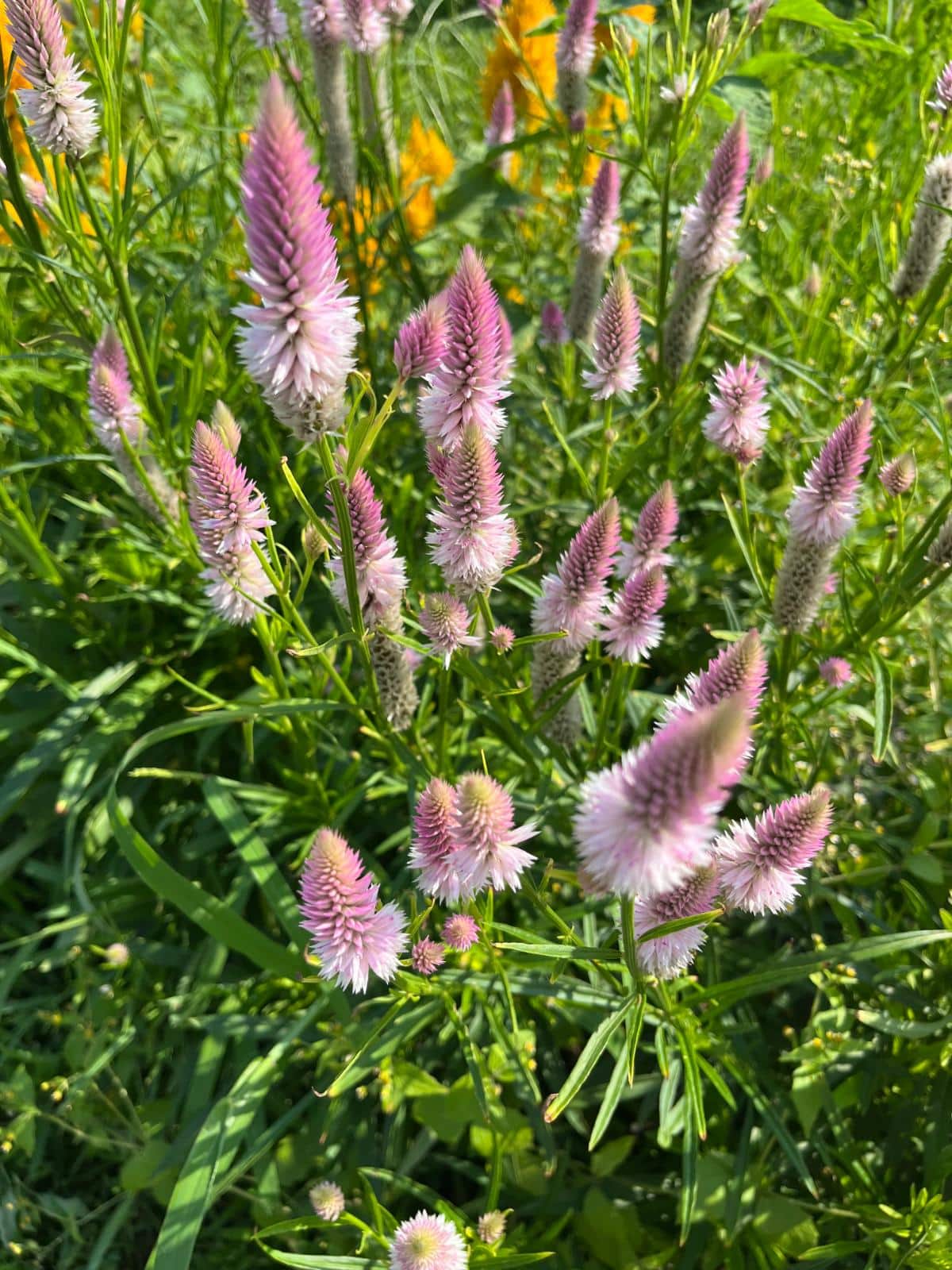
One thing about dried flowers is that they won’t have the foliage to help fill the arrangement, so you may find yourself in need of something to fill the arrangement, vase, etc.
In addition to cutting flowers to dry, consider cutting something that will work well with them as a filler.
Some options include:
- Dried grasses
- Grains and grasses with attractive seed heads (like wheat and ornamental grasses with showy heads)
- Dried eucalyptus
- Juniper
- Bunny grasses
- Silver dollar plant stems
- Lavender leaf stems
- Ferns
- Other evergreens
Harvesting Flowers for Drying
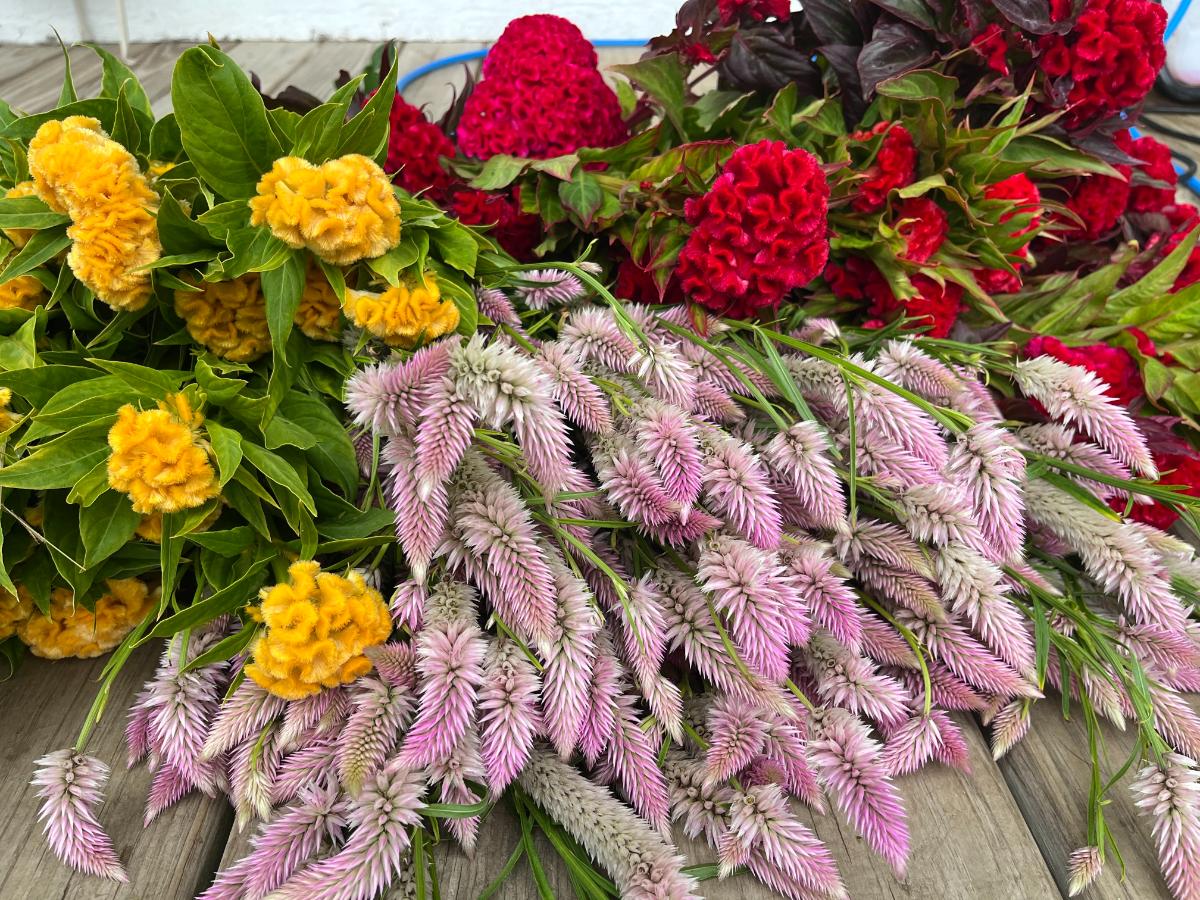
Good harvesting and harvest timing can make quite a difference in the outcome of your dried flowers. You need to start with a quality product.
Don’t make the mistake of thinking you can abuse your flowers just because you’re drying them.
Quality in equals quality out.
- Harvest fresh flowers near or at their peak
- It's better to cut flowers just as they start to open than flowers that are fully open – they'll hold their petals longer
- For seedy plants like amaranth and celosia, cut them before the seed starts to show (this is a little closed)
- Harvest and dry more than you think you will need – there won’t be much foliage to act as a filler, and the flowers will shrink some when they dry
- Wait for the dew to come off before you harvest
- Don't harvest on a rainy day
- Choose the healthiest flowers you can find, with no damage from wilting, breakage, and little to no insect damage
- Cut the stems longer than you think you will need – you can always trim down later, and the odds are that you’ll need to do some trimming and cleaning up when you make your arrangements
How to hold your flowers until you can prep them for drying
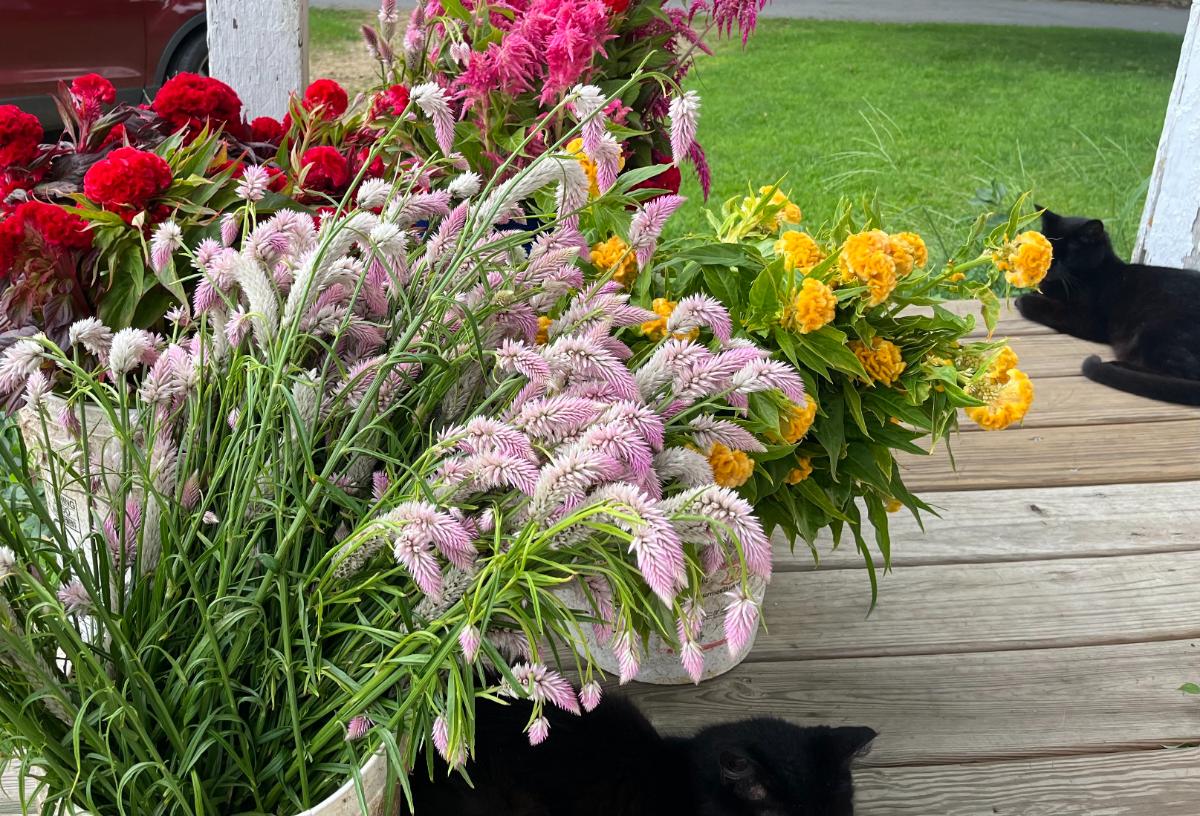
Keep the fresh-cut flowers in a bucket of water until you’re ready to work with them. This may sound unnecessary or counterintuitive since you’re drying the flowers, but you want the stalks to be firm and the flowers to be full of life and color – as fresh and as close to the peak as they can be right up until they are dried.
Wilted flowers will bend and have limp stems. That can cause them to be weak and look limp and dead instead of dried.
Color will bleach from limp, wilted flowers, too, so until you’re ready to prep and dry them, keep them in top form.
- Resist the urge to use your drying flowers for fresh flower displays and arrangements before you dry them if their purpose is for dried arrangements later
- It is okay to dry fresh bouquets for sentimental reasons or for a second life later, but if the goal is drying flowers for displays and arrangements later on, it is best to prep, hang, and dry them at their peak for the longest life and brightest colors
Prepping Flowers for Drying
Prep and hang your flowers for drying as soon as you can after they are cut.
- Strip the foliage from the stems so it doesn’t turn brown and rot, and allow more air to flow around the stems
- Leave long stems, long enough to work with and trim
- Keep all the stems about the same length for hanging
- Sort flowers and fillers by type or by bouquet
- Bundle in bundles of 5 to 10 stems (five for larger, thicker stemmed flowers, 10 for thinner stems)
- Use rubber bands to tie bundles
- Twine or floral wire can also be used, but rubber bands work the best because they will contract with the bundles as they dry out and won’t leave you with loose bundles and stems that slip out. It is also easy to cut the bands when you want to use your flowers.
- Tie a string through the band for hanging, then tie it to the wire, etc. to hang
Where to Hang Flowers for Drying
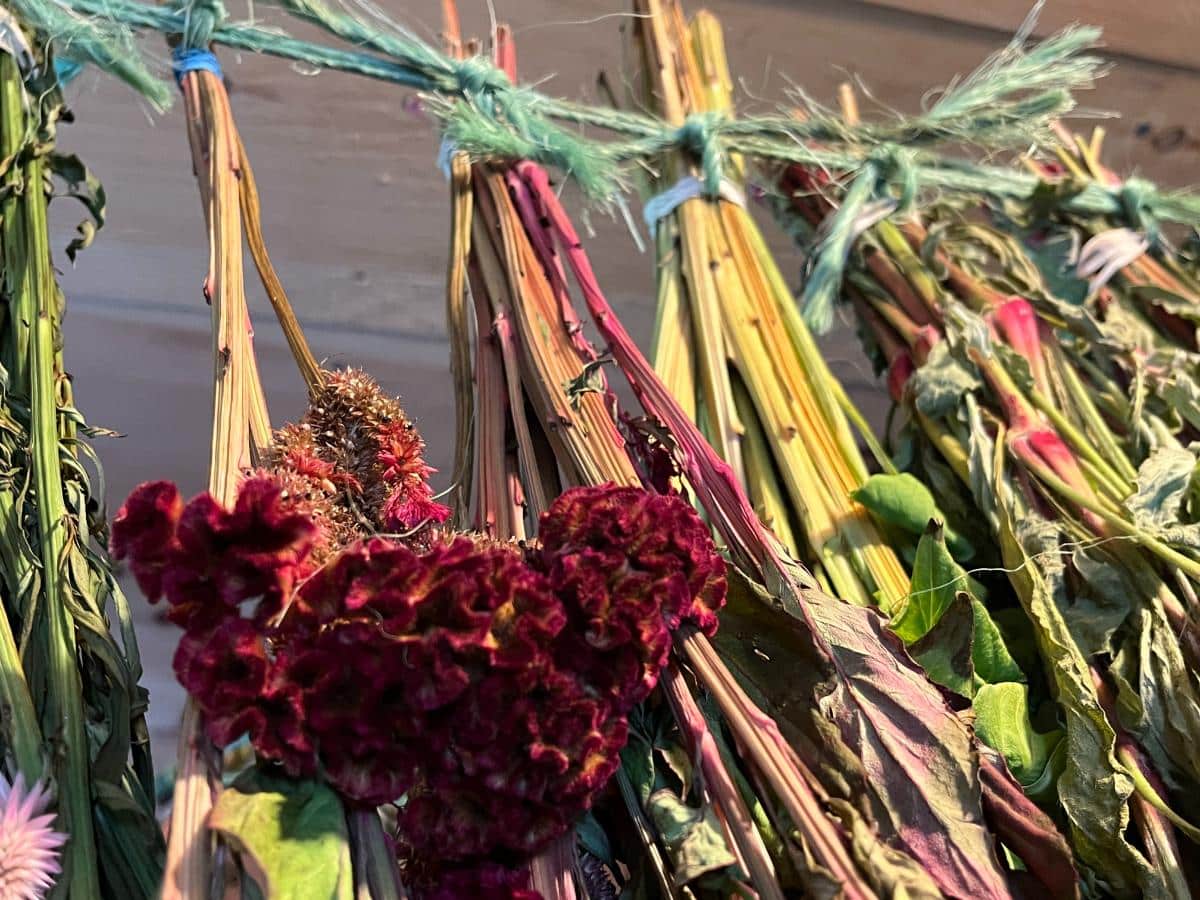
It’s important to choose the right space for drying your flowers. This will give you stronger dried flowers that dry more quickly and that dry instead of rot.
- Choose a space that is dry and as free of excess humidity as possible
- The space should have good ventilation and cross breeze – airy windows are nice as long as the flowers won’t have any strong winds on them
- Keep the flowers out of direct sunlight. Sunlight will bleach the color.
A warm, dry attic with a window, a garage or mudroom out of direct sunlight, or an airy space in a barn or shed are all good places to dry flowers.
You can dry flowers from a rod hung across the room’s ceiling, from rafters or framing, or you can string a strong wire, twine, or rope across the space and hang bundles from it. A clothesline is a good option!
Make Sure You Hang Flowers Upside Down
Always hang your flowers upside down, with the top of the flowers (or filler) and the flower head hanging down.
This will ensure that the stems dry straight and strong, and you will have nice, straight flowers that stand upright without breaking when you make your arrangements.
If you hang drying flowers right-side-up, the flowers will wilt and bend before they dry, and the heads will break off (and won’t look very nice in arrangements).
How Long Does It Take for Flowers to Dry?
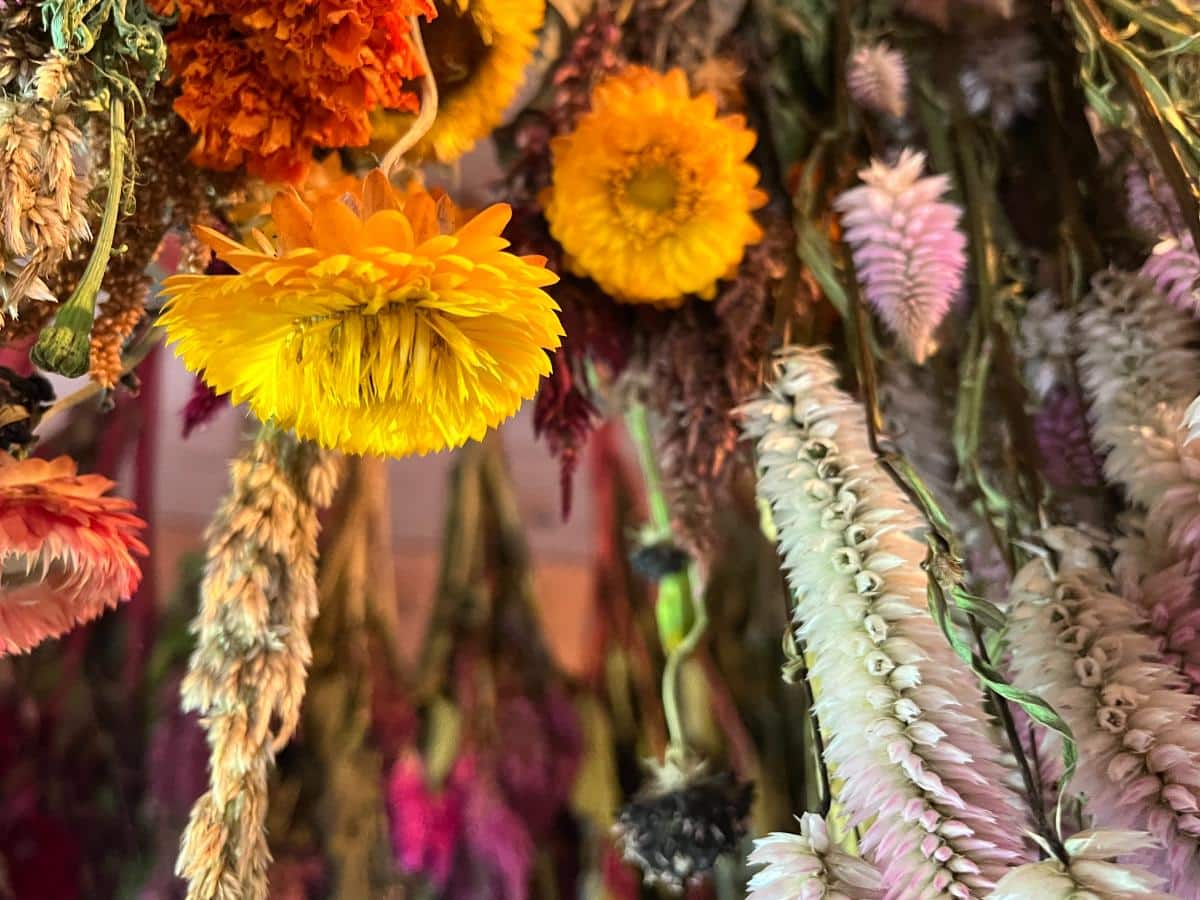
How long it takes your flowers to dry depends on a few things.
Weather and humidity, where you hang them, ventilation, temperature...all of these come into play.
The type and size of the flowers will also affect the drying time. Larger flowers with several layers of petals will take the longest to dry. Flowers that are naturally low in moisture in the field or garden will dry more quickly.
In general, plan on at least two weeks for your flowers to dry. Often, it can take as long as three or four weeks for flowers to dry properly and to cure for arranging.
If you are drying flowers for an event, plan on at least a month of drying time.
Fortunately, once dry, the flowers will last a long time, and you will have time to arrange them and use them, so more time is better than less when planning drying time.
Unlike fresh flowers, you can make dried flower arrangements weeks in advance of when you need them, so again, an early start only benefits you!
Where to Use Dried Flowers
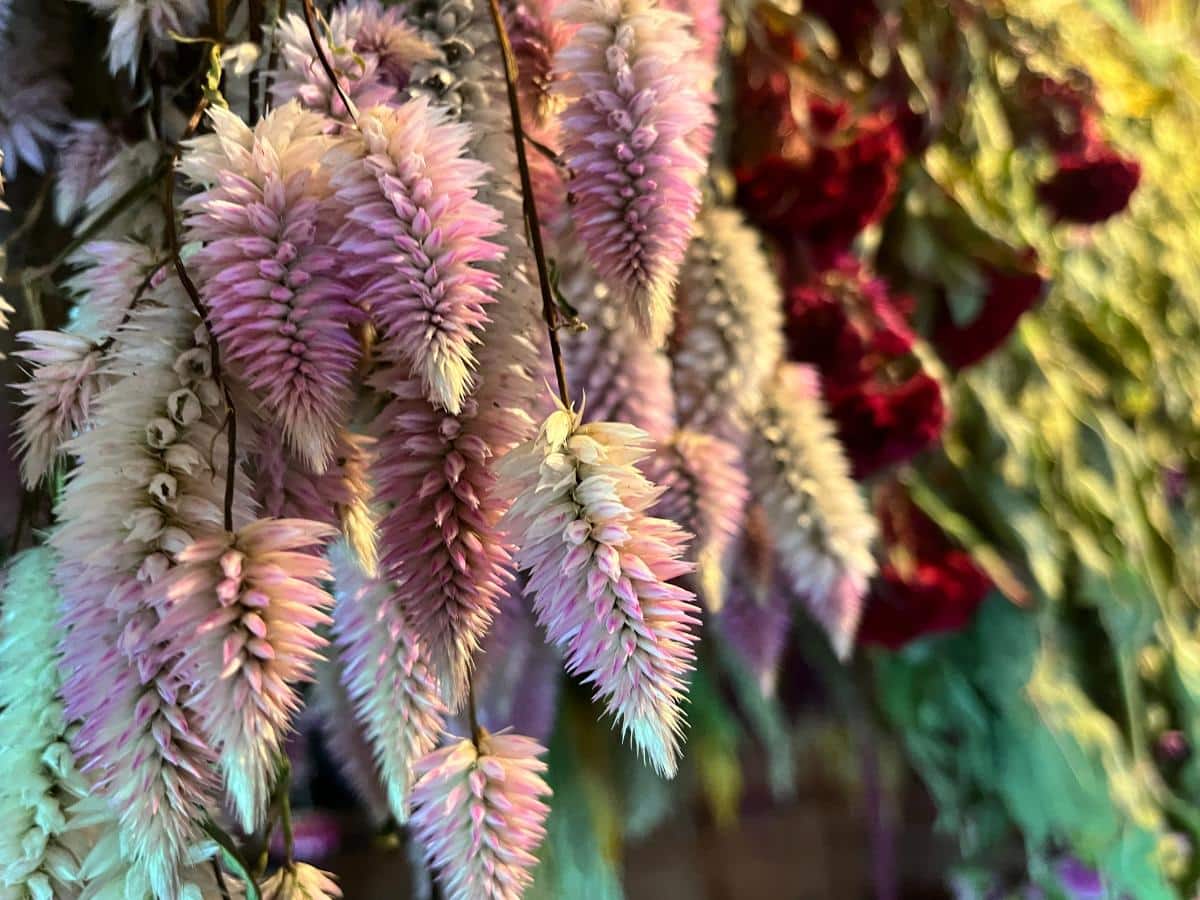
There are all sorts of ways you can use dried flowers. You should feel free to experiment and seek out new uses of your own.
Some ways that people love to use dried flowers are
- In potpourri and bowl fillers
- For dried flower arrangements (in place of or in vases, for example)
- As home accents
- Hung in dried bundles for decoration
- To make wreathes
- For table centerpieces
- In wedding bouquets
- In scrapbooking and cardmaking
- To create botanical framed “prints”
One of the drawbacks of fresh flowers is their limited, short life. Dried flowers let us enjoy the beauty and colors of nature for much longer and give us more ways to use those lovely blooms.

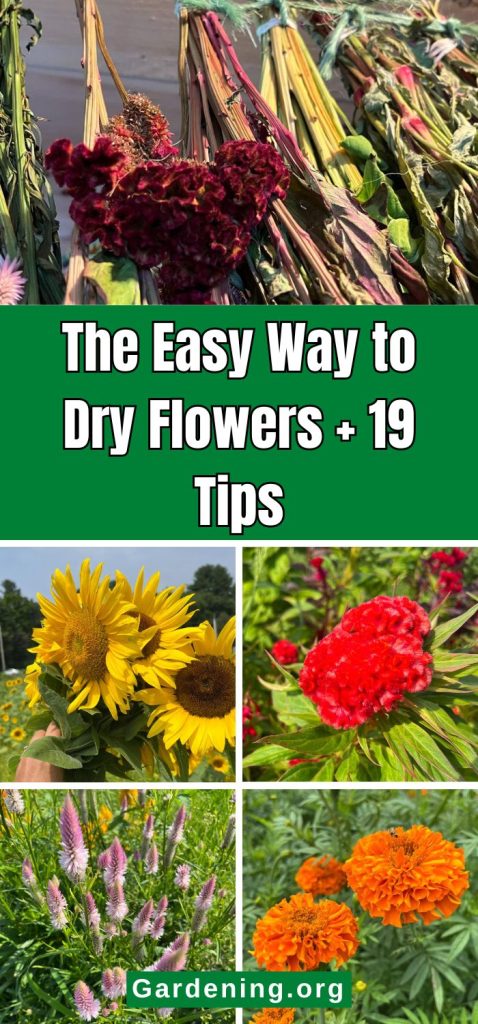
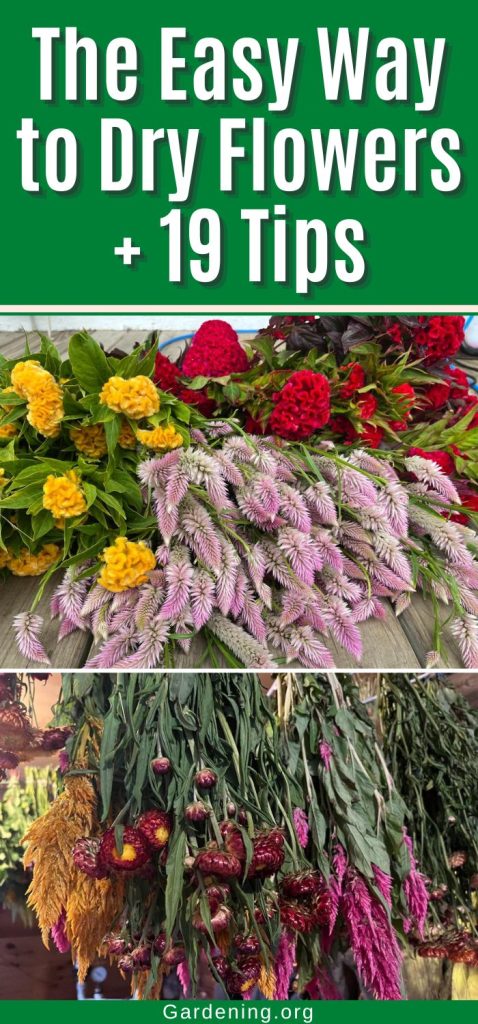






Leave a Reply